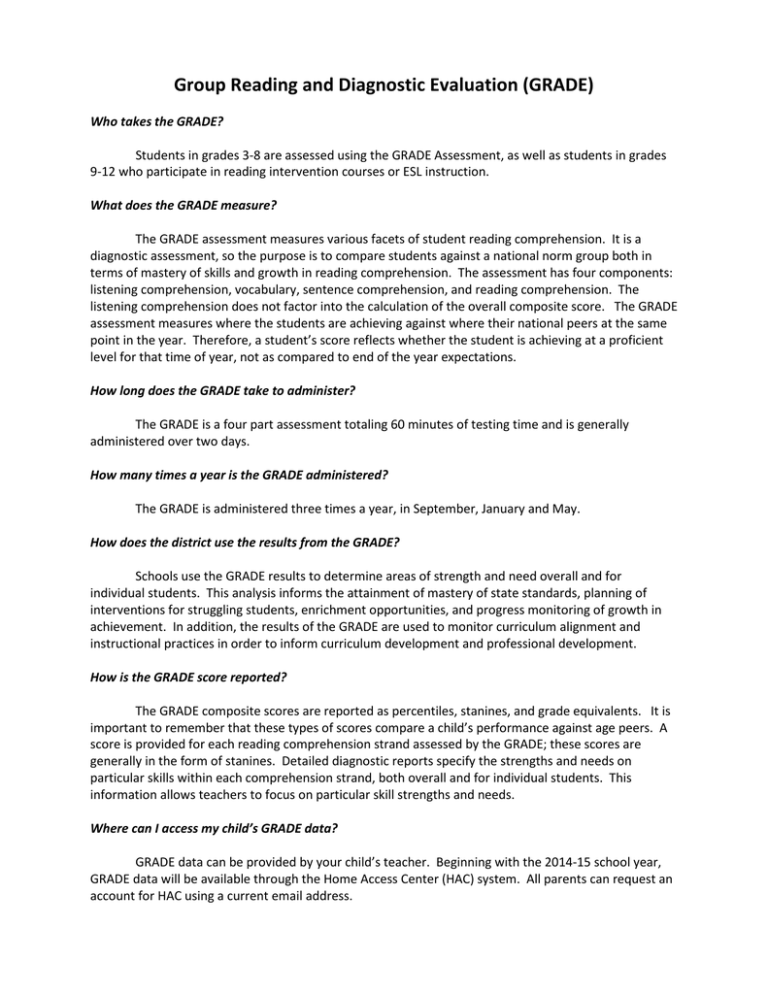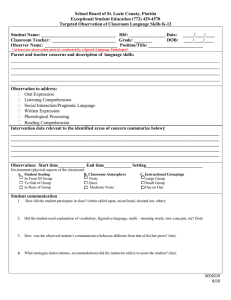Group Reading and Diagnostic Evaluation (GRADE)
advertisement

Group Reading and Diagnostic Evaluation (GRADE) Who takes the GRADE? Students in grades 3-8 are assessed using the GRADE Assessment, as well as students in grades 9-12 who participate in reading intervention courses or ESL instruction. What does the GRADE measure? The GRADE assessment measures various facets of student reading comprehension. It is a diagnostic assessment, so the purpose is to compare students against a national norm group both in terms of mastery of skills and growth in reading comprehension. The assessment has four components: listening comprehension, vocabulary, sentence comprehension, and reading comprehension. The listening comprehension does not factor into the calculation of the overall composite score. The GRADE assessment measures where the students are achieving against where their national peers at the same point in the year. Therefore, a student’s score reflects whether the student is achieving at a proficient level for that time of year, not as compared to end of the year expectations. How long does the GRADE take to administer? The GRADE is a four part assessment totaling 60 minutes of testing time and is generally administered over two days. How many times a year is the GRADE administered? The GRADE is administered three times a year, in September, January and May. How does the district use the results from the GRADE? Schools use the GRADE results to determine areas of strength and need overall and for individual students. This analysis informs the attainment of mastery of state standards, planning of interventions for struggling students, enrichment opportunities, and progress monitoring of growth in achievement. In addition, the results of the GRADE are used to monitor curriculum alignment and instructional practices in order to inform curriculum development and professional development. How is the GRADE score reported? The GRADE composite scores are reported as percentiles, stanines, and grade equivalents. It is important to remember that these types of scores compare a child’s performance against age peers. A score is provided for each reading comprehension strand assessed by the GRADE; these scores are generally in the form of stanines. Detailed diagnostic reports specify the strengths and needs on particular skills within each comprehension strand, both overall and for individual students. This information allows teachers to focus on particular skill strengths and needs. Where can I access my child’s GRADE data? GRADE data can be provided by your child’s teacher. Beginning with the 2014-15 school year, GRADE data will be available through the Home Access Center (HAC) system. All parents can request an account for HAC using a current email address.


